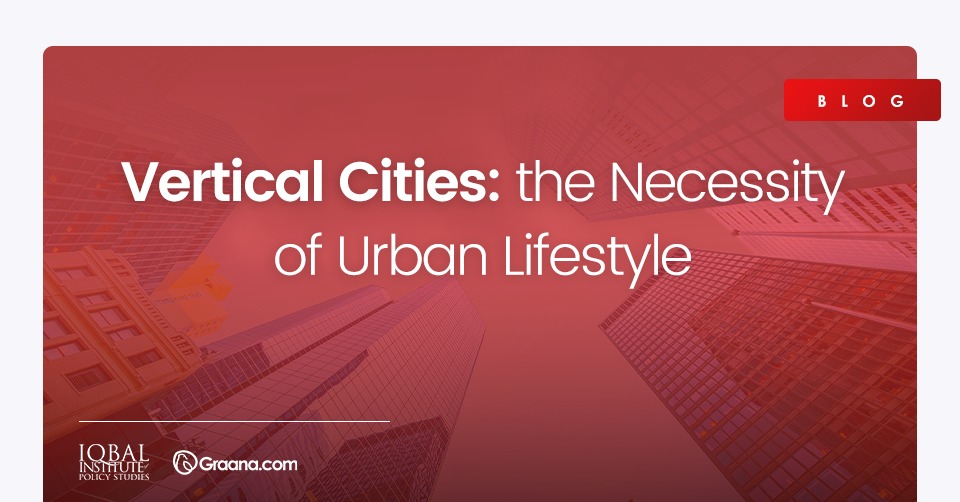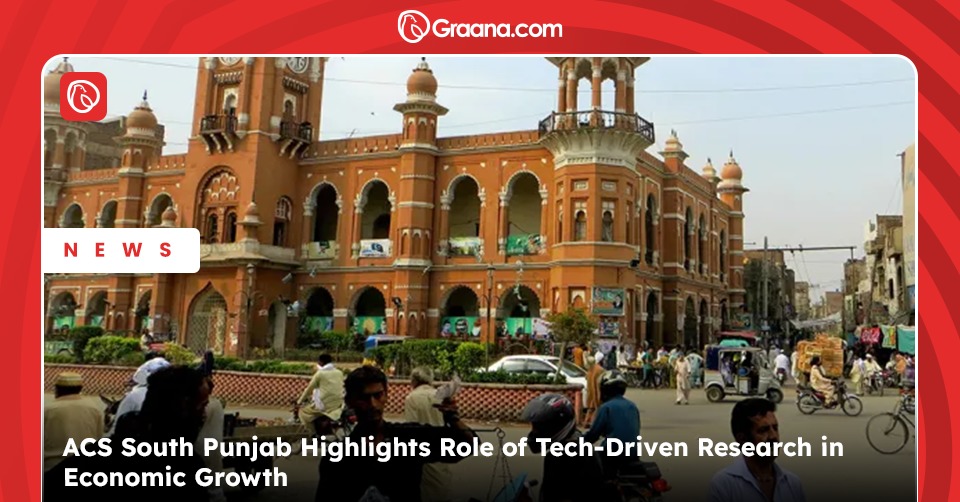Introduction
At the emergence of 2022, the world is marred with the challenges of receding urban spaces due to overpopulation. Technological advancements in medical sciences have contributed to longer life spans for individuals, and the subsequent population upsurge is directly proportional to the need for residential spaces. A growing number of housing societies often destroy green spaces, agricultural land, forests and natural habitats. According to UNDP, Pakistan faces a housing shortfall of around 10 million housing units. With limited natural resources, landmass for residential purposes, and a predominantly agricultural economy, the housing crisis can only be averted through ‘vertical development’. Vertical development is being re-imagined, including residential complexes, educational institutions, office spaces and children’s play zones in vertical buildings. This interconnected high-rise and low-rise building web will build a vertical ecosystem, resulting in a sustainable vertical city. Residential apartments are already on the rise in urban lifestyle due to financial constraints, feasibility and fast lifestyle. However, vertical cities are imagined to be these all-encompassing complex high-rise structures that can sustain the urban ecosystem.
This blog by the Iqbal Institute of Policy Studies will discuss the concept of vertical cities, sustainable living, the housing crisis, and the right to a clean environment in detail.
Concept of Vertical Cities
The Government of Pakistan has initiated several low-rise affordable housing schemes for low-income groups to resolve the housing crisis and reduce the urban sprawl. Pakistan’s main cities can play a significant role in achieving the structural revolution and growth of urban lifestyle. 60% of Pakistan’s population lives in urban areas, and its cities are not well-equipped to support the economic transformation. A population bomb could explode the façade of urban spaces with rising pollution, road congestion, diminishing residential spaces, high living costs, increasing slums, and rapidly disseminating urban sprawl. A ‘Vertical City’ encompasses the entire human ecosystem in a single high-rise building. In the future, vertical cities will include residential spaces, educational institutions, parks, playgrounds for children, hospitals and office spaces in a complex of high-rise buildings. The main benefit of vertical cities is harnessing wind and solar energies. However, Pakistan’s geographical landscape shall determine the feasibility of building a high-rise vertical structure with the land prone to earthquakes and natural disasters. The Government of Pakistan has initiated several low-rise affordable housing schemes for low-income groups to resolve the housing crisis and reduce the urban sprawl.
Mitigating the Housing Shortage
Given the existing implications of the post-COVID world, the challenge is to achieve economic stability and develop a policy framework to combat urban sprawl. Amidst the housing crisis, Pakistan needs affordable, low-income, vertical housing schemes and plans instead of the high-end housing schemes in posh localities. The high-end housing schemes have developed into the profitable investment opportunity for ‘surplus capital injections’ instead of meeting the residential needs of the community. Around 69% of housing societies in Pakistan are unregistered with the authorities and thus illegal. The Government of Pakistan is developing a policy framework for regularising housing societies. However, affordable housing and lack of adequate land availability have created numerous problems. Increasing residential and commercial real estate prices have prompted people to opt for affordable housing, such as apartments. Vertical construction allows for the accommodation of more families in reduced space instead of horizontal constructions.
Sustainable Living
A sustainable city is designed to incorporate social, economic and environmental factors within the city’s fabric. The main goals are to foster a healthy habitat for the present and future generations. Other aspects of sustainable cities include social and environmental justice, optimising energy, water and food consumption, mitigating the greenhouse effect by decreasing carbon emissions, reducing air pollution, and protecting water resources. Moreover, the United Nations adopted the seventeen Sustainable Development Goals (SDGs) in 2015 to help protect the planet. Goal 11 of the SDGs is Sustainable Cities and Communities, which invigorates the importance of green spaces and sustainable infrastructure for urban development. Due to urbanisation, a rapid increase in fuel consumption and overcrowding of roads with vehicles has also contributed to decreasing air quality. However, the vertical city model is ideal for supporting sustainable living for deteriorating planet and environmental degradation. It can accommodate the housing needs of people, harness solar and wind energy, reduce air pollution, increase the green spaces and contribute heftily to the sustenance of the environment.
Right to the Clean and Green Environment
The landmark judgment of Shehla Zia v WAPDA laid down the foundations of environmental litigation in Pakistan. The court expanded the meaning of the right to life to include the right to have a safe environment. This entails that the right to have a safe environment is the fundamental right of every citizen of Pakistan. The unique Master Plan of Islamabad gives true character to the city as a sustainable model. The aerial view of Islamabad presents the city in a ‘Grid-Iron Pattern’, with distinguishable green spaces and parks explicitly designed to reduce the heat-island effect of the city. Moreover, the city is intended to incorporate parks and natural spaces in the urban city space. The Government declared Margalla Hills as a National Park in 1980 for its conservation. However, the air quality is rapidly deteriorating with rising urbanisation. Vertical cities will ensure that the minimum space is used for residential projects, and larger chunks of land are left for agricultural and green spaces.
Micro-Housing Units
Minimalism and micro-housing units are the main takeaways of the 21st century. Previously, large land and residential estate tracks were paramount to a person’s social prominence. However, with the degrading environment, over-population, and pollution, larger horizontal residential complexes are changing. People are opting for smaller housing units for several reasons. Firstly, larger horizontal houses are high maintenance and susceptible to regular wear and tear. Secondly, they consume more energy and occupy unnecessary chunks of land which could be used for plantation purposes. Thirdly, the rising residential real estate prices have made it nearly impossible for an average person to own a housing unit of 10 marlas. Consequently, vertical cities encompassing affordable micro-apartments and housing units will solve the issues faced by many people due to rising inflation, environmental degradation and sustainability concerns.
Conclusion
Vertical Cities are the future of urban lifestyle, with residential complexes, office spaces, educational institutions and play areas for children all incorporated into one building. Such cities will also provide sustainable energy, harnessing adequately due to upward construction. The development of vertical cities is contingent on geographical factors, including earthquakes, floods and susceptibility to support high-rise buildings. Moreover, financial constraints are another essential areas factor to consider. The world is moving towards vertical construction to support and conserve the environment and meet the rising population’s requirements. Vertical Cities will leave more room for green spaces, public parks, and a cleaner environment. Green spaces are essential to counter the heat island effect of cities contributing to higher temperatures and climate change. The Government of Pakistan is already investing in low-income vertical housing units. The main urban centres of Pakistan like Lahore, Karachi and Islamabad are observing the trend of rising apartment complexes. Similarly, real estate development is shifting towards the culture of ‘luxury apartments instead of 10 Kanal bungalows. The housing crisis can only be averted through vertical construction in the form of affordable and luxury apartment complexes.
Get to know CDA bylaws. If you’re looking for luxury apartments in Lahore then The Avenair is the best choice for you!




